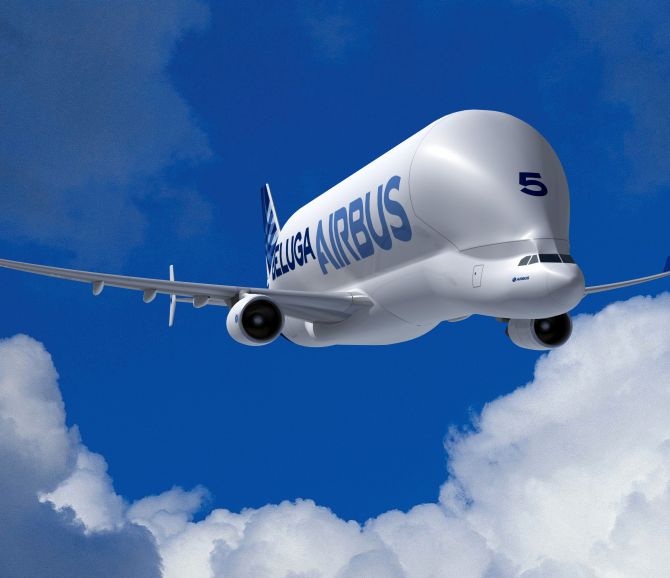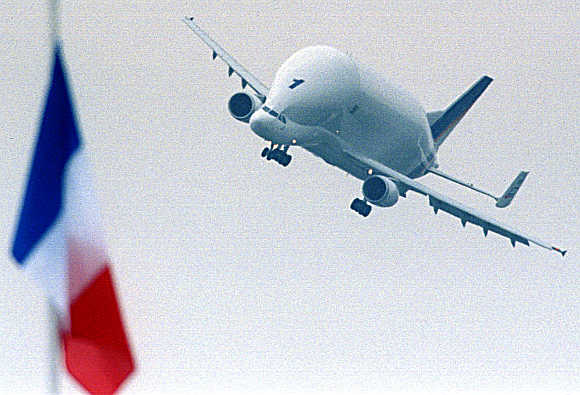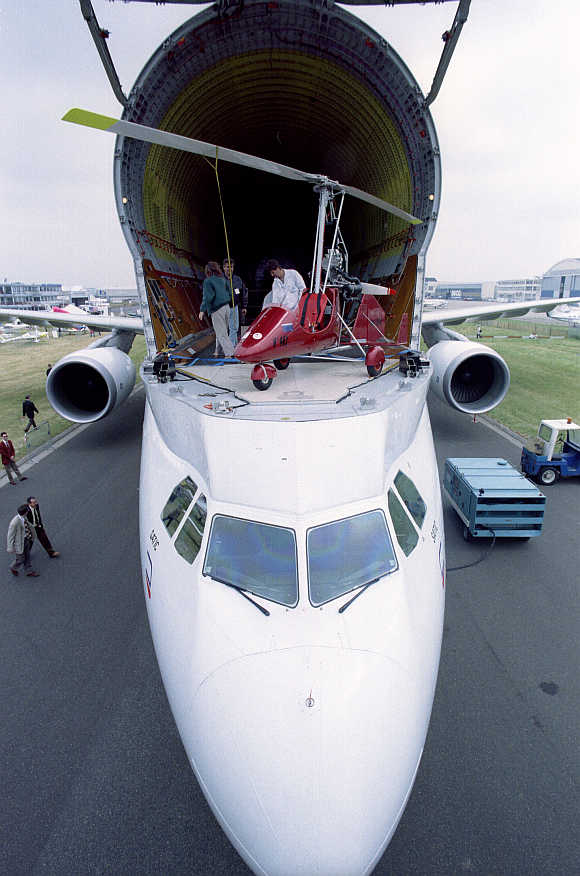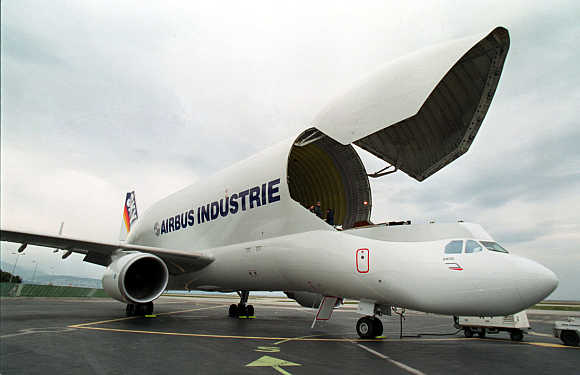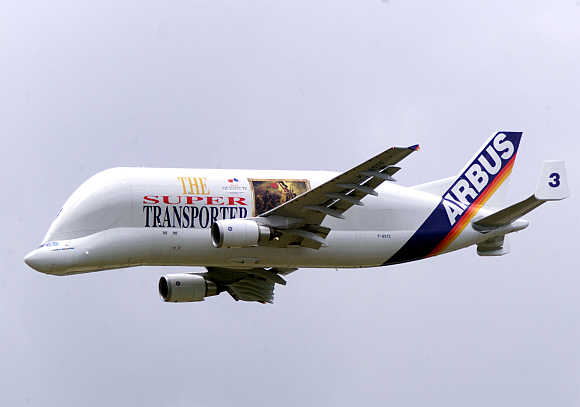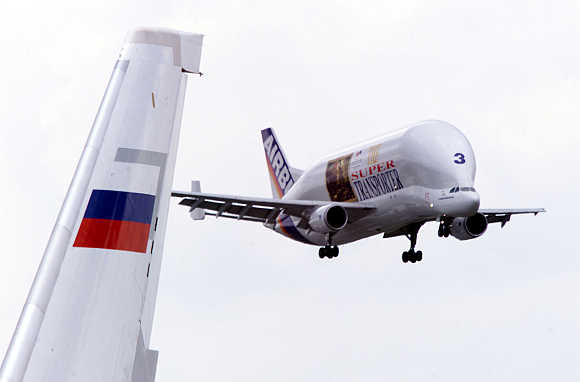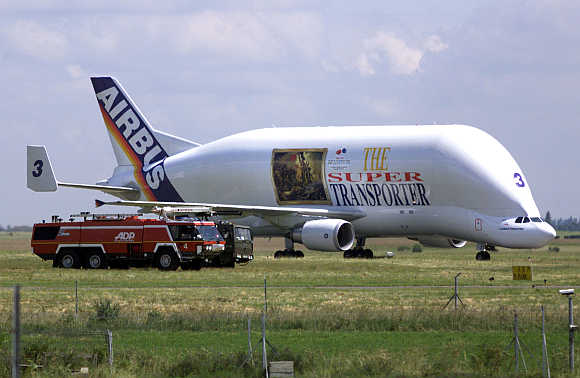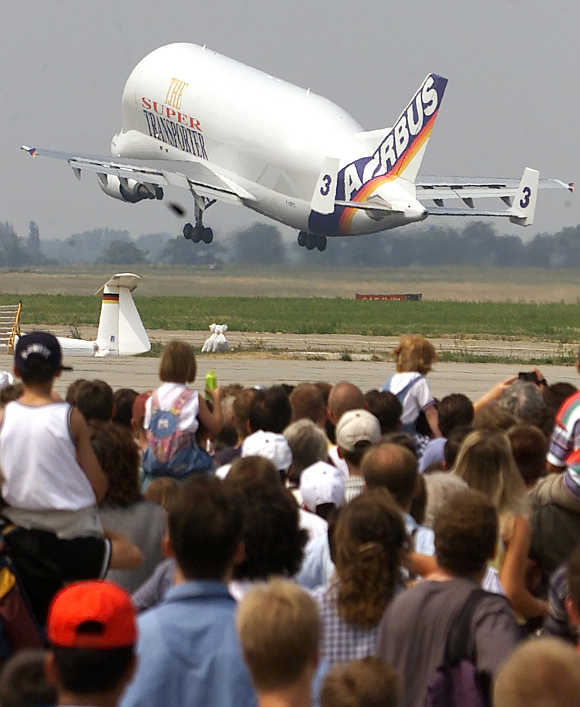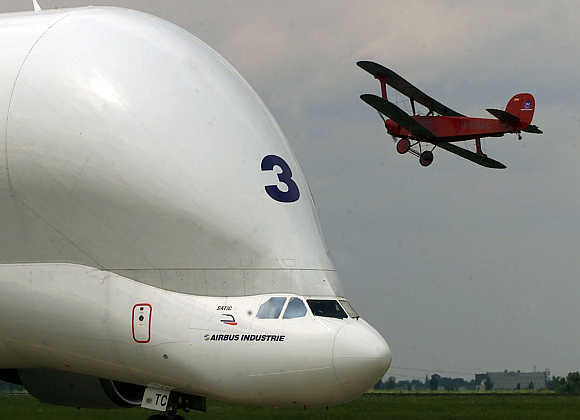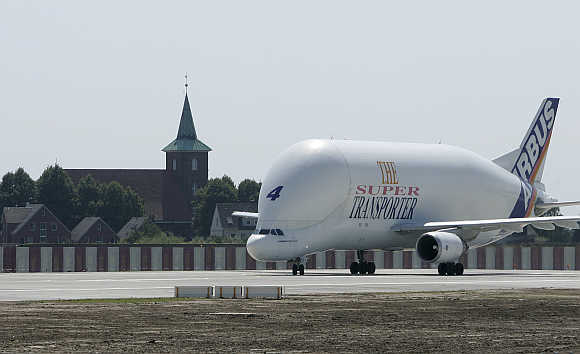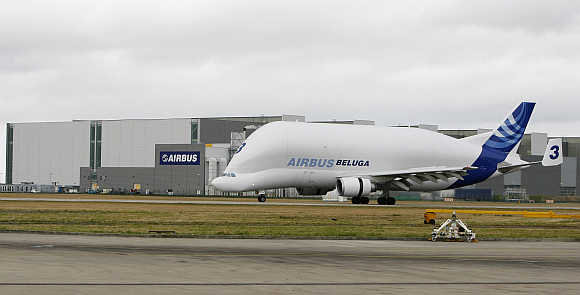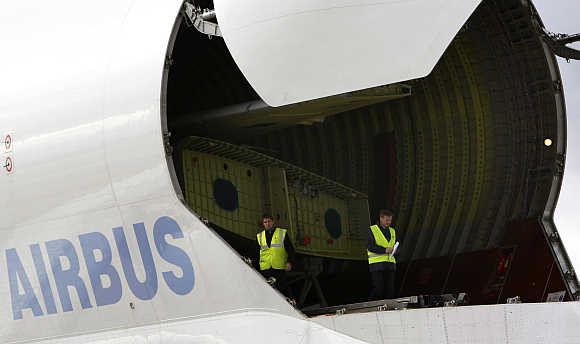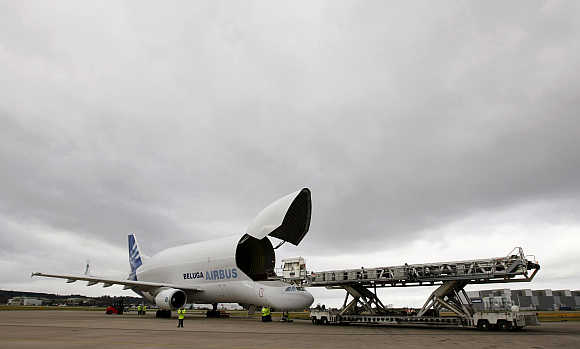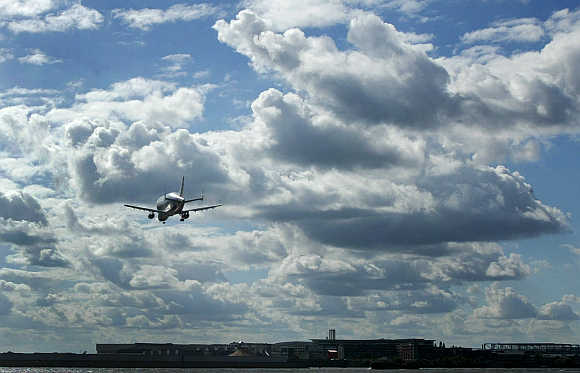 | « Back to article | Print this article |
Amazing images of world's biggest transport plane
Featuring one of the most voluminous cargo holds of any civil or military aircraft flying today, the Airbus Beluga offers a unique way to transport oversized air cargo.
The Beluga was developed to carry complete sections of Airbus aircraft from different production sites around Europe to the final assembly lines in Toulouse or Hamburg.
Let's take a look at some amazing photos of Beluga.
Click NEXT to read more...
Amazing images of world's biggest transport plane
Several major aircraft manufacturers are multinational, and it is not unusual for them to have plants in widely separated locations.
Airbus is unique in that it is a consortium formed by the major French, German, British and Spanish aerospace companies.
Click NEXT to read more...
Amazing images of world's biggest transport plane
The geographic location of Airbus manufacturing is not only influenced by cost and convenience, it is also a matter of aviation history and national interest. Each of the Airbus partners makes an entire aircraft section, which must be transported to a central location for final assembly.
The details vary from one model to another, but the general arrangement is for the wings and landing gear to be made in the UK, the tail and doors in Spain, the fuselage in Germany, and the nose and centre-section in France, with final assembly in either Toulouse, France; Hamburg, Germany; or Seville, Spain.
Click NEXT to read more...
Amazing images of world's biggest transport plane
Construction of Beluga began in September 1992, and the first flight took place in September 1994. After 335 hours of test flying, restricted certification was awarded in October 1995, and the A300-600ST Beluga entered service.
Four more Belugas were constructed, at a rate of roughly one per year, and all five remain in regular service.
Click NEXT to read more...
Amazing images of world's biggest transport plane
Their primary task is to carry Airbus components ready for final assembly across Europe to Toulouse or Hamburg, but they are also available for charter work, and have been used to carry a variety of special loads, including space station components, large, very delicate artwork, industrial machinery, and entire helicopters.
Click NEXT to read more...
Amazing images of world's biggest transport plane
The A300-600ST's freight compartment is 7.4 m (24 ft) in diameter and 37.7 m (124 ft) long; maximum payload is 47 tonnes.
At 155 tonnes its maximum take-off weight is comparable to a normal A300, showing that the Beluga was intended for large but relatively light cargo.
Click NEXT to read more...
Amazing images of world's biggest transport plane
The main deck cargo volume of the Beluga is greater than that of the C-5 Galaxy or the Antonov An-124 but still smaller than Antonov An-225.
However it is restricted by cargo weight capacity of 47 tonnes, compared to 122.5 tonnes for the C-5 Galaxy and 150 tonnes for the An-124.
Click NEXT to read more...
Amazing images of world's biggest transport plane
Despite this width, the Beluga cannot carry most fuselage parts of the A380, which have to be brought by ship and road usually. The Beluga has been used to transport a few A380 components.
Click NEXT to read more...
Amazing images of world's biggest transport plane
In 1999 it carried a large painting Liberty Leading the People by Eugene Delacroix, which had hung in the Louvre in Paris since 1874. It flew from Paris to Tokyo via Bahrain and Calcutta in about 20 hours.
The large canvas, measuring 2.99 metres high by 3.62 metres long, was too large to fit into a Boeing 747. It was transported in the vertical position inside a special pressurised container provided with isothermal protection and an anti-vibration device
Click NEXT to read more...
Amazing images of world's biggest transport plane
The Beluga (also known as the A300-600ST Super Transporter) was developed to carry complete sections of Airbus aircraft from different production sites around Europe to the final assembly lines in Toulouse or Hamburg.
Click NEXT to read more...
Amazing images of world's biggest transport plane
The five-aircraft fleet of Belugas is operated by Airbus Transport International. In addition to serving the internal transportation needs of Airbus, ATI offers Belugas on a charter basis to third parties.
Click NEXT to read more...
Amazing images of world's biggest transport plane
ATI ensures a high level of customer satisfaction with loading, unloading, and delivery designed to be fast, safe, flexible, and reliable - as demonstrated by years of successful operations throughout the world.
Click NEXT to read more...
Amazing images of world's biggest transport plane
A wide range of commercial charter missions have been performed by Airbus Transport International, including airlifting a 17.6-metre-long x 6.5-metre-diameter chemical tank weighing 39 metric tonnes.
Click NEXT to read more...
Amazing images of world's biggest transport plane
Space hardware manufacturers use the Beluga for reliable charter flights with payloads that have included space station modules, launch vehicle hardware and the most delicate satellite payloads.
Click NEXT to read more...
Amazing images of world's biggest transport plane
A pallet-mounted heating module provides a comfortable environment for spacecraft and other cargo that requires temperature-controlled conditions.
Click NEXT to read more...
Amazing images of world's biggest transport plane
In addition, the Beluga offers unique transport capabilities for the military airlift market, providing the largest main deck cargo compartment of any aircraft available today.
Click NEXT to read more...
Amazing images of world's biggest transport plane
Beluga is a highly modified version of the A300-600 and features one of the widest fuselage cross-sections of any aircraft, civil or military.
Click NEXT to read more...
Amazing images of world's biggest transport plane
Its main deck cargo volume is greater than the Lockheed C-5A Galaxy, Antonov AN-124 and Boeing C-17.
Click NEXT to read more...
Amazing images of world's biggest transport plane
Tailored for the transport of heavy and voluminous cargo loads, the Super Transporter is able to carry a payload of 47 metric tonnes over a range of 900 nautical miles (1,667km).
Click NEXT to read more...
Amazing images of world's biggest transport plane
Beluga is ideally suited to move delicate space hardware. Its voluminous cargo compartment and a lift capability of over 47 metric tonnes ensure that large loads can be accommodated easily and carried in a safe, secure environment.
